
(Class Insecta, Order Raphidioptera)
Invertebrates Around Las Vegas, Wildlife Around Las Vegas
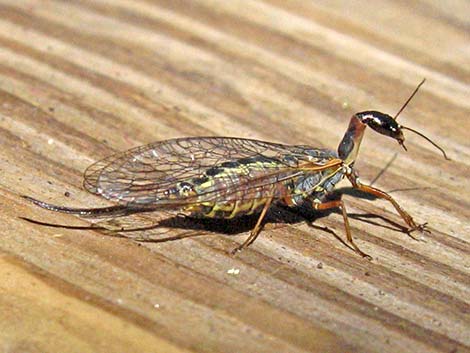 |
General: The Snakeflies and Square-headed Snakeflies (Order Raphidioptera) are an ancient group of flying creatures that mostly went extinct with the dinosaurs, but two families persist: the Raphidiidae (Snakeflies, Agulla sp.) and the Inocelliidae (Square-headed Snakeflies, Negha sp.). The snakeflies are similar to the lacewings, and formerly they were considered a suborder of Neuroptera. Snakeflies and lacewings generally are recognized by their long, lacy wings that show a network of veins. In addition, the membranous wings are in two pairs, the body is long and relatively thin, and the antennae are long. However, in snakeflies, the prothorax (neck) is elongate, giving these insects a snake-like or cobra-like appearance. Females have a long ovipositor that looks like a giant stinger. Fortunately, it is not a stinger, and these insects are completely harmless to humans. |
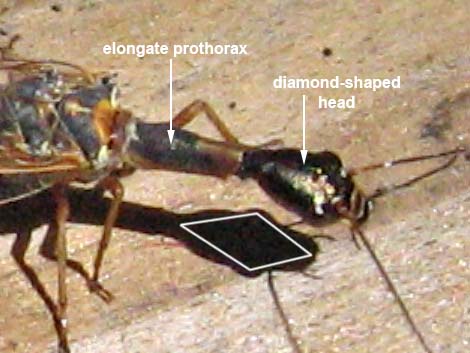 |
Members of the Snakefly family and the Square-headed Snakefly family are separated by experts using technical characteristics, but most of the time, Snakeflies have a diamond-shaped head, while the Square-headed Snakeflies have a rectangular-shaped head. Snakeflies and their elongate larvae are predators on other insects, consuming and reducing the population of harmful insects such as aphids. As such, these creatures would be valued guests in gardens and farms, but they live in shrubby and forested areas of North America, mostly west of the Rocky Mountains. |
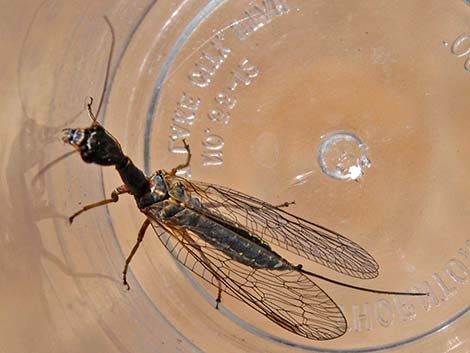 |
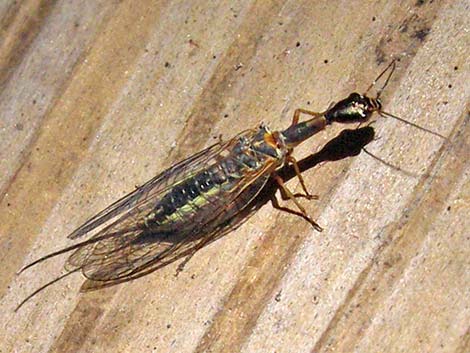 |
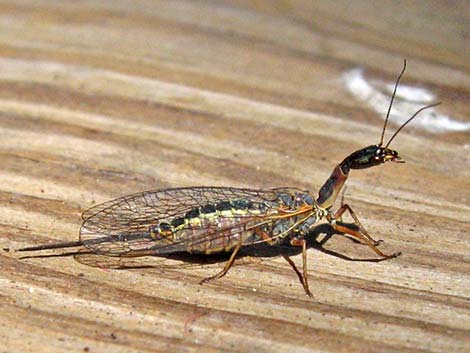 |
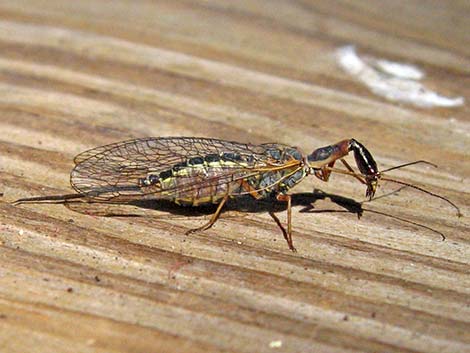 |
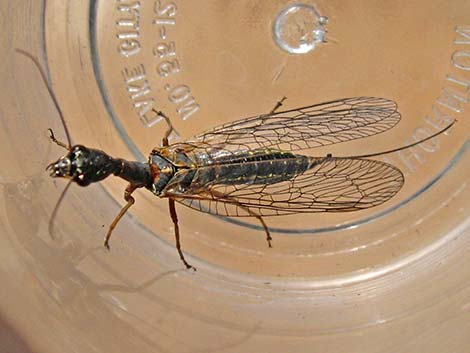 |
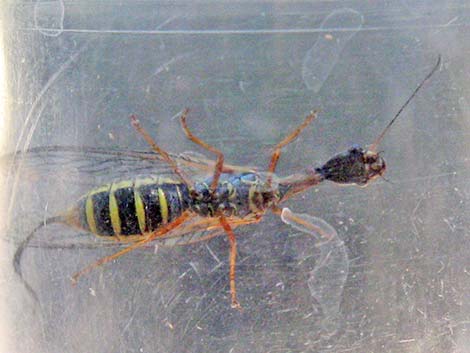 |
Note: All distances, elevations, and other facts are approximate.
![]() ; Last updated 240210
; Last updated 240210
| Inverts Around Las Vegas | Wildlife Around Las Vegas | Glossary | Copyright, Conditions, Disclaimer | Home |